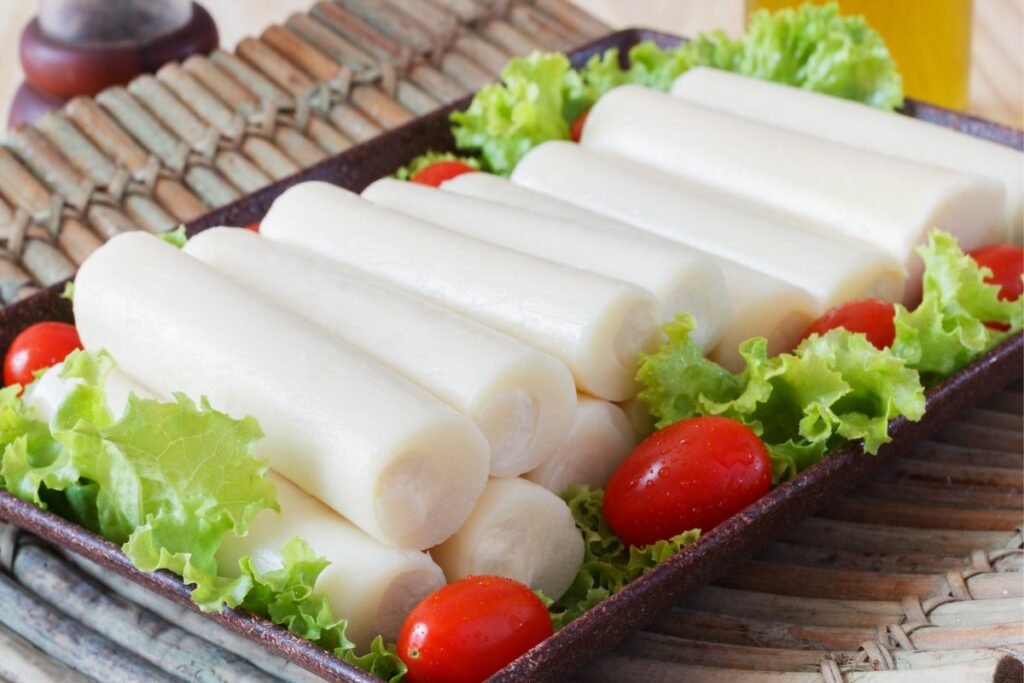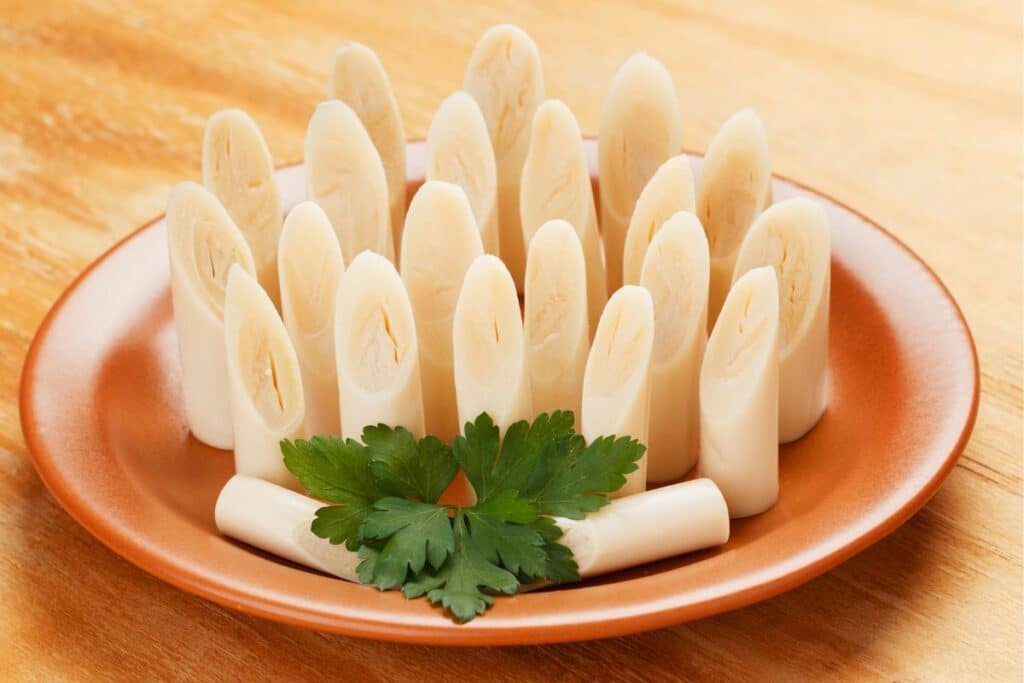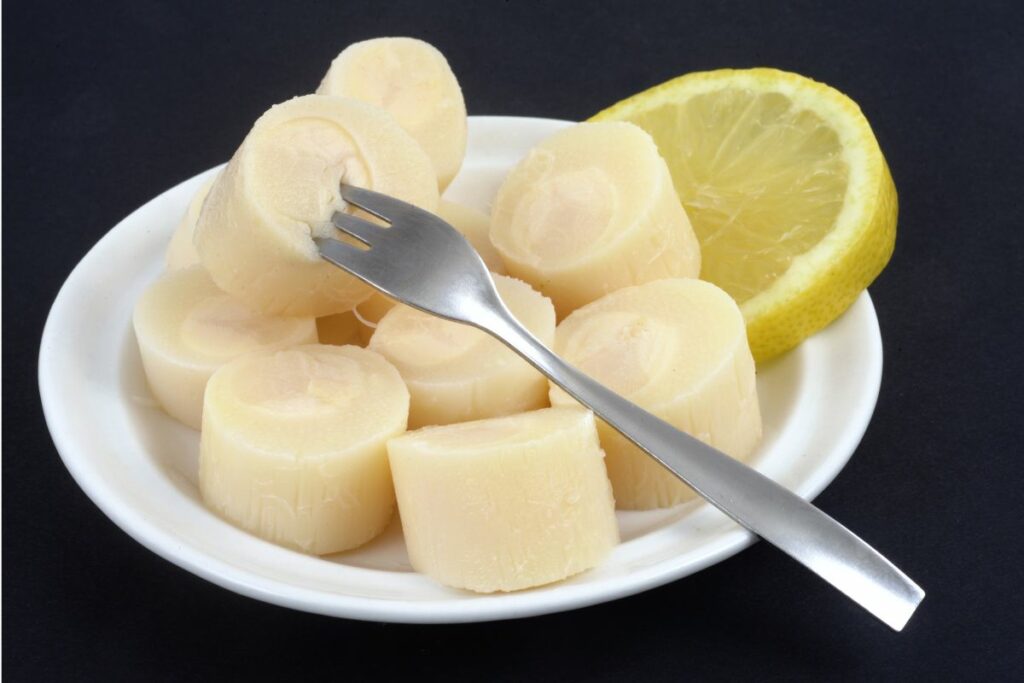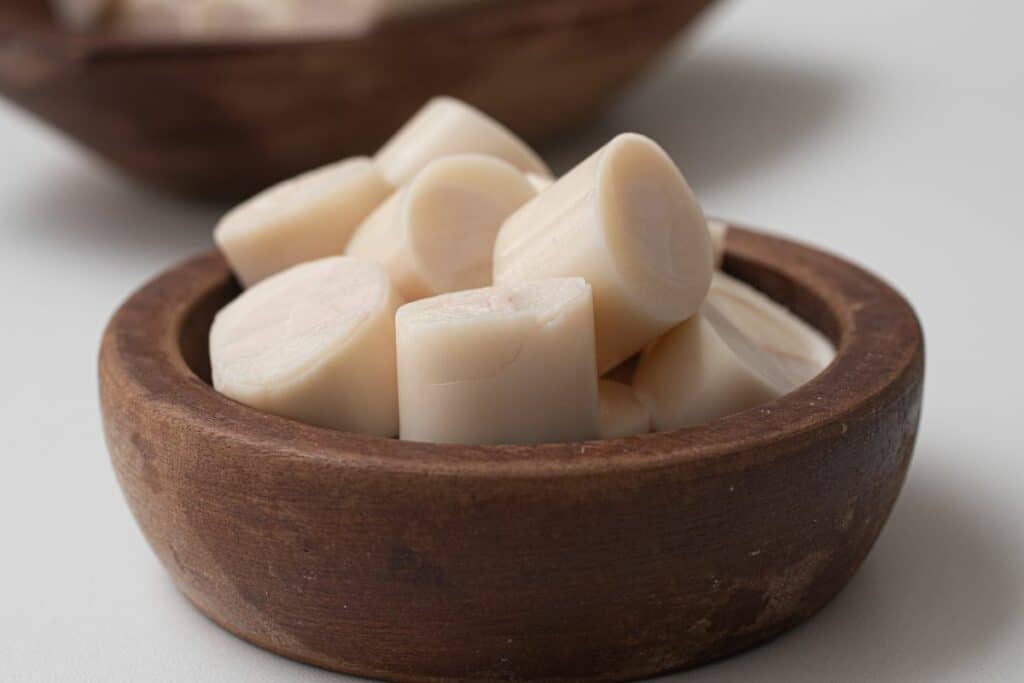A fact that is largely unknown is that palm trees actually have an extremely high nutritional value.
Right inside the palm tree is a tender, fleshy edible section. This is known as the heart of palm.

It has been rising in popularity in the health and wellness culture as it is an excellent source of carbohydrates. However, it is unusual and may even intimidate you.
We are here to discuss everything that you need to know about the heart of palm. What is it? Does it taste good? Should it be in your diet?
Keep reading to find out more!
What Is Heart Of Palm?
As we already know, the heart of palm is the core of certain types of palm trees. It is a great source of nutrients for both the tree and humans.
Palm trees such as coconut, acai palm, plamiterio, and peach palm all produce a heart of palm at their very core.
This is then enjoyed in soups, salads, or even raw straight from the plant.
Once harvested, the heart of palm is cut into rings or cylinders which is then packed into water or brine for preservation.
They are white, fleshy vegetables that are often compared to white asparagus in appearance.
They are native to South and Central America but are now transported all over the world.
What Does Heart of Palm Taste Like?

A common comparison with the heart of palm is to artichokes. They have a subtle, nutty flavor that is great for snacking or adding flavor to different dishes.
It works great as a meat substitute as they have a high nutritional value. It is quickly becoming a popular choice in vegan and vegetarian diets as opposed to tofu or other vegan alternatives.
The canned heart of palms has an acidic flavor and has a significantly different taste than the fresh heart of palm.
Cooking Heart Of Palm
When it comes to cooking the heart of palm, there are various methods. It is extremely common for the vegetable to be enjoyed raw in salads for a nutty flavor.
However, they can also be fried, roasted, or even boiled for a range of different recipes. They work perfectly as a meat or even seafood substitute.
Simply cook the heart of palm the same way you would any other vegetable. Sear it, fry it, and roast it.
Any method you use when you prepare this incredible vegetable is going to give you an added layer of flavor.
Health Benefits Of Heart Of Palm

As Heart of Palm is considered a vegetable, there are various benefits that come along with having it in your diet.
High In Antioxidants
Heart of Palm is extremely rich in polyphenol antioxidants which are great for preventing conditions such as diabetes, heart disease, and even cancer.
May Aid Weight Loss
Heart of Palm is extremely low in calories which is perfect for anyone in a calorie deficit. You can eat a lot of it without stunting your progress.
It is also high in water and fiber which can promote the feeling of fullness for longer. Encouraging you to remain in your deficit and even lose weight.
Heart of Palm should be added to your diet regularly for a healthy, balanced lifestyle.
Lower Blood Sugar
Pre-diabetics and diabetics should consume more heart of palms because it can help regulate insulin and lower blood sugar, both of which are essential for a healthy metabolism.
It contains antioxidants like chlorogenic acid, which lowers your risk of obesity and diabetes while also regulating lipids and blood sugar levels.
Additionally, it aids in the metabolism of dietary fat, which can reduce the risk of heart disease.
There is one thing to be aware of when including the heart of palm into your diet.
The canned heart of palm is extremely high in sodium which can lead to an increase in blood sugar. Make sure to rinse off the brine before adding to your meals or enjoying it as a snack.
How To Store Heart Of Palm

You can purchase canned or jarred heart of palm year-round. Fresh hearts of palm are difficult to come by as they are extremely perishable and can be expensive.
Canned or jarred heart of palm should be stored in a cool, dry area and will keep for up to three months.
When opened, store them in the refrigerator and use them within one week.
You cannot freeze the heart of palm. It is extremely high in water content and freezing it can change the texture immensely.
Stick to storing your heart of palm in the refrigerator and it will last around 10-14 days. Longer than most fruits and vegetables.
Knowing When Heart of Palm Is Bad
Once the heart of palm begins to go bad it changes in color. Often dark spots or blemishes will appear and a sour odor will begin to take place.
Make sure to throw your heart or palm in the trash if you notice any of these signs.
Final Thoughts
Heart of palm is an incredible vegetable located in the core of most palm trees. Perfect if you find yourself stranded on a tropical island.
It has a subtle nutty flavor that is comparable to fresh artichoke. Anyone looking for a healthier carb substitute or even to replace meat can enjoy the flavor and texture of the heart of the palm.
Just make sure to give the canned heart of palm a good rinse before cooking!






